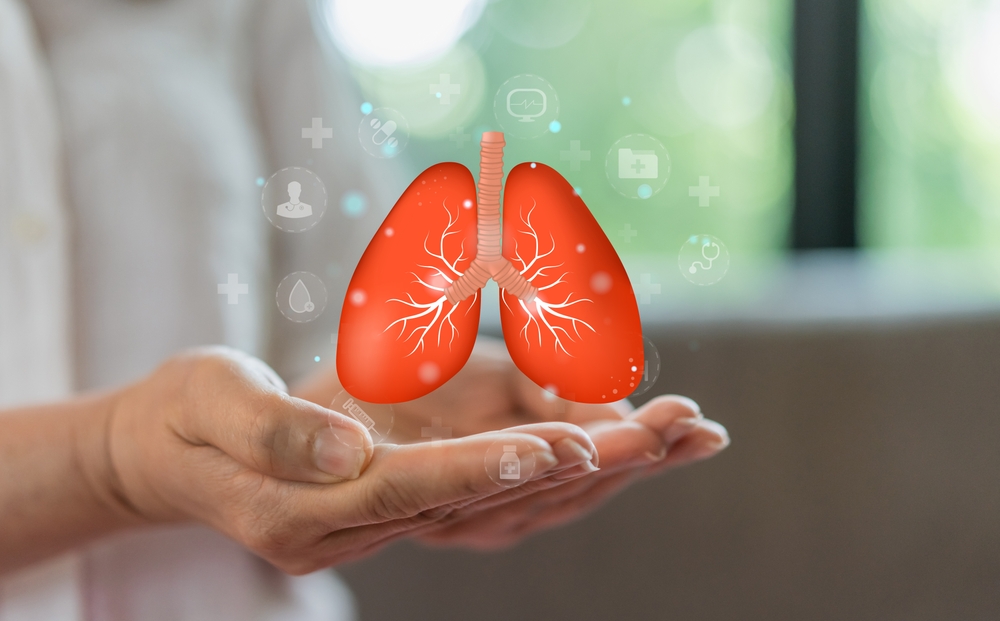Last Updated:
August 7th, 2025

We often think about addiction in terms of cravings, habits and emotional pain, but what about the physical toll of long-term addiction? A person may be struggling to cope with major organ damage, often with no visible outside trace.
How do substances travel through the body?
A person can take a substance through swallowing, smoking, snorting, or injecting, and regardless of the method, the ingested substance does not just stay in one place. Broadly speaking, substances will travel throughout the body through the bloodstream. While a drug’s psychological effects are limited to influences on the brain, the rest of the body’s major organs will likely suffer damage over time, in a myriad of ways.
The brain’s reward system is hijacked and perception is altered, but elsewhere in the body, different forms of damage start to take shape. Some are immediate, others are cumulative and compound over time.
Some organs are inextricably linked with others, so damage in one area sets off a chain reaction in another. An example is how liver cells work overtime to process toxins, which can cause a response in the heart, leading to irregular rhythms or raised blood pressure.
Understanding the path of travel for most substances is crucial for damage control. Drug and alcohol addiction may start in the brain, but it never ends there. That’s what makes addiction a full-body illness, and why recovery is in place to care for more than just the mind.
How can we map out the damage caused by addiction?
The damage caused by addiction isn’t always visible from outside observation. It doesn’t show up like a broken bone or a bruise. Inside the body, the rampaging damage of substance abuse can be widespread and, if left unaddressed, permanent.
Thanks to the ever-evolving pursuits in the scientific understanding of drug and alcohol addiction, specialists can now look at internal damage caused by prolonged substance abuse. Brain scans can show structural changes in addicted people. Imaging technologies can reveal scarring in the liver, and blood and urine tests can detect chemical imbalances long before outward symptoms appear.
In short, the internal impact of addiction can be roughly mapped out by medical experts before many external signs appear. Yet, not everyone acts on these changes. Struggling with an alcohol or drug addiction might force someone to act only when no other option is available. By then, recovering from many impairments may be too late.
Which organs are most commonly damaged through addiction?
Here are some of the most commonly recurring impairments to the body’s major organs. We hope early awareness can drive you to seek the help you need:
Substances such as alcohol, opioids, stimulants and benzodiazepines profoundly alter the brain’s reward circuit, impairing decision‑making, learning and impulse control. Heavy alcohol use can cause brain shrinkage, especially in the frontal lobes and hippocampus, with long-term consequences for memory and cognition. This brain shrinkage can even be felt, to a small extent, in the headache of a hangover.
Fortunately, many of these changes can be reversed with sustained abstinence.
Stimulants like cocaine and amphetamines are also notorious for raising heart rate and blood pressure, increasing your chances of a heart attack. The early window of recovery is critical for your heart, as reducing or stopping alcohol intake can allow significant recovery of cardiac function
- Paracetamol (acetaminophen) in high doses, especially when combined with alcohol or opioids, can overwhelm the liver’s detox systems and cause acute liver failure.
- MDMA (ecstasy), cocaine, and inhalants have been linked to hepatic necrosis, cholestasis, and enzyme elevation.
- Anabolic steroids, often used recreationally, can cause liver tumours and peliosis hepatis (blood-filled cysts in the liver).
Given enough time, substance use can lead to fatty liver, fibrosis, cirrhosis, or liver cancer. Most dangerous complications in the liver show few symptoms in the early stages, making early intervention essential.
Why is internal damage so often overlooked?
One of the most insidious effects of addiction is how quietly it wears down the body. While some signs are more overt, the deeper damage often escapes attention until it becomes critical. There are several reasons for this:
- Out of sight, out of mind: Simply put, most people won’t consider the danger they’re in until symptoms are more obvious. But many forms of internal damage won’t cause pain until they’re advanced. Unlike a broken bone, internal injury rarely announces itself in an obvious way.
- Focus is often on behaviour, not biology: In addiction, attention is often placed first on the mind, and subsequent behaviours, such as isolating and having mood swings. This can overshadow the physiological harm quietly accumulating in the background.
- Stigma silences disclosure: Many people hide their substance use for fear of judgment, making it less likely that symptoms get the attention they need early on.
This is why the recognition of how substances affect your internal organs is vital in recovery. Not necessarily to scare or strike fear, but to help you make more informed decisions and encourage early intervention. Much of the damage is reversible if it is spotted promptly.
How does the body start to heal in recovery?
We’ve outlined some of the most serious consequences for your major organs if addiction is left unchecked. However, we should remember that the human body is remarkably resilient, especially once substance use has ceased and you’re being kinder to your body.
Here are some of the ways your body will start to heal in the early stages of recovery:
- The brain begins recalibrating: In the absence of substances, the brain slowly starts recalibrating its dopamine system and reactivating decision-making pathways. You’ll notice improvements in sleep and focus in the first few weeks, though withdrawal symptoms may initially disrupt these functions.
- Liver function improves: The liver is one of the body’s most regenerative organs. If permanent damage like cirrhosis hasn’t occurred, it often starts filtering toxins more effectively after just a few days or weeks of sobriety.
- Heart rate and blood pressure begin to normalise: Especially in people recovering from alcohol or stimulant use, cardiovascular markers like resting heart rate and blood pressure will become more stable in early recovery.
- The kidneys regain efficiency: Hydration and abstinence help ease the load on the kidneys, allowing them to better regulate electrolytes and waste removal.
- Gut health stabilises: The gastrointestinal system often reacts strongly to both drug use and withdrawal. But once substances are removed, inflammation can begin to subside and the gut lining may start healing, making it more efficient and absorbing nutrients.
Early recovery won’t mean an instant return to normal. There will be great challenges ahead, but even in discomfort, your body is hard at work resetting its systems and laying the groundwork for sustained recovery.
Where can I get help for my addiction?
If you’re feeling the weight of what substance use may be doing to your body, it’s not too late to start healing. With the right support, the damage can still be undone and you can start healing.
At UKAT, we specialise in rehab through medical detox, with tailored therapy and compassionate care to get you ready for healing and complete recovery. Our aftercare systems are in place to keep you on steady footing when future urges feel troubling.
Recovery is possible, and it starts with a single step. Reach out today and begin your journey toward a healthier, stronger future, from the inside out.
(Click here to see works cited)
- “About the Liver.” Liver Foundation, liver.org.au/your-liver/about-the-liver/
- Cooper S, Robison AJ, Mazei-Robison MS. Reward Circuitry in Addiction. Neurotherapeutics. 2017 Jul;14(3):687-697. doi: 10.1007/s13311-017-0525-z. PMID: 28324454; PMCID: PMC5509624.
- Risher, Brittany. “Can Heavy Drinking Actually Hurt Your Brain?” SELF, 11 Apr. 2025, www.self.com/story/alcohol-related-dementia.
- Shaaban A, Gangwani MK, Pendela VS, et al. Alcoholic Cardiomyopathy. [Updated 2023 Aug 8]. In: StatPearls [Internet]. Treasure Island (FL): StatPearls Publishing; 2025 Jan-. Available from: https://www.ncbi.nlm.nih.gov/books/NBK513322/
- Piano MR. Alcohol’s Effects on the Cardiovascular System. Alcohol Res. 2017;38(2):219-241. PMID: 28988575; PMCID: PMC5513687.
- Opioids and Renal Function – Sciencedirect, www.sciencedirect.com/science/article/pii/S1526590003008721
- Rotundo L, Pyrsopoulos N. Liver injury induced by paracetamol and challenges associated with intentional and unintentional use. World J Hepatol. 2020 Apr 27;12(4):125-136. doi: 10.4254/wjh.v12.i4.125. PMID: 32685105; PMCID: PMC7336293.
- LiverTox: Clinical and Research Information on Drug-Induced Liver Injury [Internet]. Bethesda (MD): National Institute of Diabetes and Digestive and Kidney Diseases; 2012-. Acute Hepatic Necrosis. [Updated 2019 May 4]. Available from: https://www.ncbi.nlm.nih.gov/books/NBK548560/



